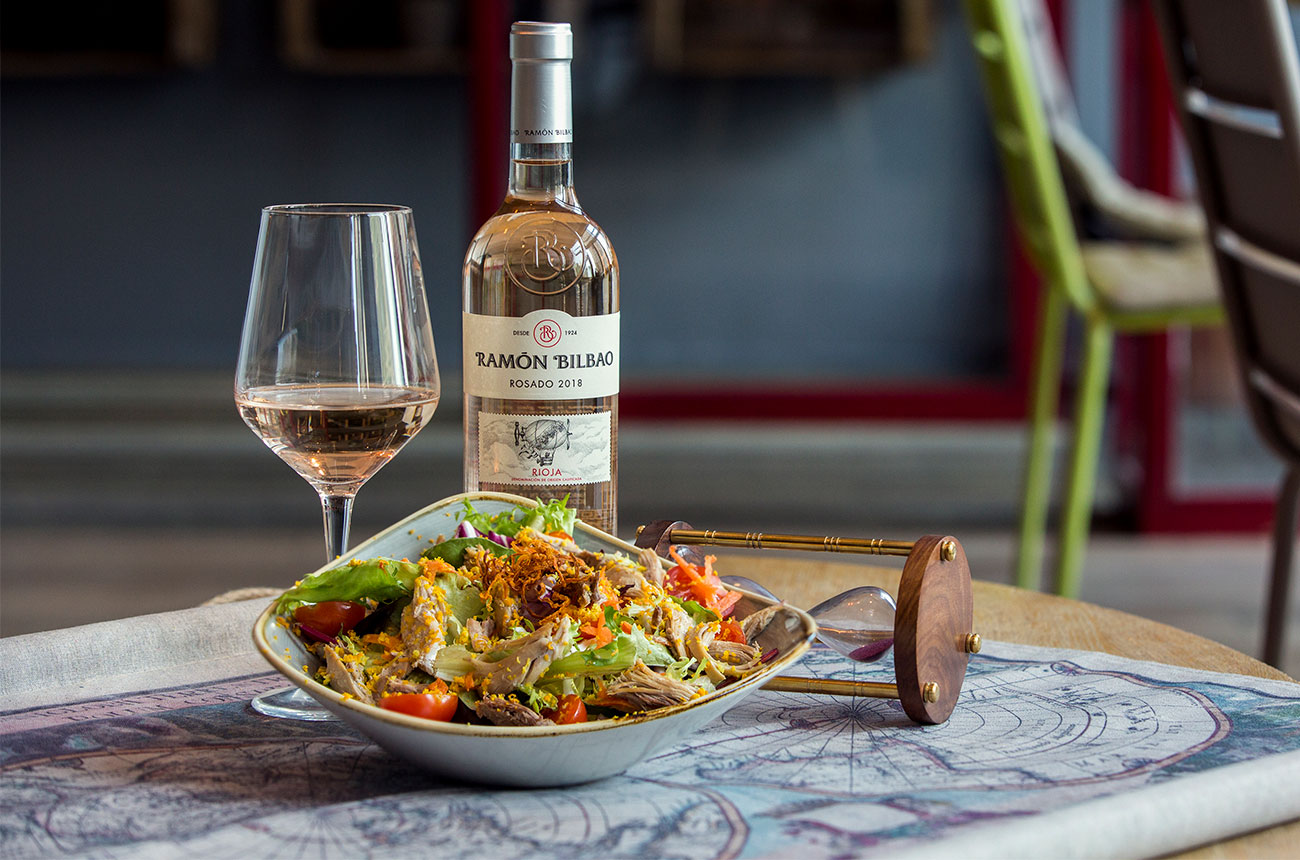The dramatic hills and valleys of Rioja must be among the world’s best-loved viticultural landscapes. The region’s grape varieties, its ageing cellars and its wines have been endlessly discussed and dissected by wine lovers around the world for the past two centuries. But, hiding in plain sight alongside Rioja’s famed oak-aged reds and its subtly oxidative whites, is one of the wine world’s best-kept secrets.
There is no valid reason for Rioja’s rosados to lurk beyond the spotlight, other than the fact that their fame has been eclipsed by their red and white cousins. The truth is that Spanish rosés in general, and those of Rioja in particular, have both a venerable history and an exciting future – at least if the growth in demand for these wines is anything to go by.
Pink wines are made right around Spain: from crunchy Mencia-based rosés from Bierzo in the northwest; to hearty, often deeply coloured southern rosados based on Monastrell. DOs in the northeast of Spain, such as Catalunya and Somontano, play with an eclectic suite of grapes when it comes to making rosés, as does Rioja’s neighbour, the DO of Navarra.

Unlike the region’s famous reds, the rosés of Rioja are largely dependent not on Tempranillo for their character, but on Garnacha (a grape that lies at the heart of many of the world’s best rosés). Depending on where and how it is grown, Garnacha can manifest a broad bouquet of aromas, from rich red berries to heady floral notes and bright citrus, from subtle spices to the fragrant tang of woody herbs. The grape can lend weight and gravitas to a wine, but can also show vibrancy and perfume.
Of course, many Spanish rosados are blends, and in Rioja Tempranillo often lends its deep-throated fruitiness to the region’s pink wines, while Viura helps provide a vibrant, zesty lift. Whatever the blend, though, one thing that helps create character in most of Rioja’s rosados is the winemaking method used to produce them. Instead of these wines being a by-blow of a production process designed to concentrate fruit in the reds, Riojan rosados are made using the direct press method, which ensures greater depth of flavour.
Rioja’s uniquely diverse terroir helps the grape to express its faceted personality to perfection. The steep mountainside vineyards of Rioja Alta rise to altitudes of around 650m above sea level. In combination with cooling Atlantic influences, this height lends freshness and aromatic lift to the wines.

Further to the east, the warmer, more Mediterranean climate of Rioja Oriental brings Grenache to a full-bodied, ripe expression, with juicy fruit to the fore. The region’s patchwork of soils, which range from limestones and clays to stony alluvial plains, further enhances its capacity to create complexity and diversity.
This diversity is reflected in the range of rosados produced in Rioja. Bright, fruit-driven styles like the youthful rosados from Baron de Ley or Ramón Bilbao are designed for easy-drinking, and make for great aperitifs on a warm summer’s evening. At the other extreme, Rioja’s rosados can be intense, structured and complex. Muga’s lightly oaked Flor de Muga provides the ideal introduction to this style, while the aged, oxidative notes of López de Heredia’s Viña Tondonia rosados delight aficionados of old-school Rioja.
Ramón Bilbao’s single-vineyard Lalomba Finca Lalinde offers a new take on Riojan rosé – elegant and refined, this is a terroir-driven twist on tradition, and a perfect partner for seafood dishes, summer salads and lightly spicy Asian flavours.
Spanish Wine Academy from Ramón Bilbao
A note from our sponsor
Bodegas Ramón Bilbao is one of the most prestigious wine brands in Spain, and a key reference in Rioja winemaking. Ramón Bilbao has an unconventional spirit, seeking innovation through its unique view of the Riojan terroir and setting trends by producing singular wines that are also profoundly in touch with their environment.
The acquisition of the Finca Lalinde Vineyard, in a unique setting in Monte Yerga, in the sub-region of Rioja Oriental, was the first step towards a soil analysis aimed at understanding the environment and producing unique wines.

It represents a rethinking the elements of classic Rioja wine in search of a new style. Growing grapes at a higher altitude produces fresher wines with stronger traces of fruit; combined with a unique philosophy of ageing which aims to allow the grape to express itself rather than conceal itself behind the oak.
Wines such as Ramón Bilbao Rosado, and in particular, the new single-vineyard Lalomba Finca Lalinde, made using a bleeding system instead of direct press method, represent the new wave of Spanish rosé.








